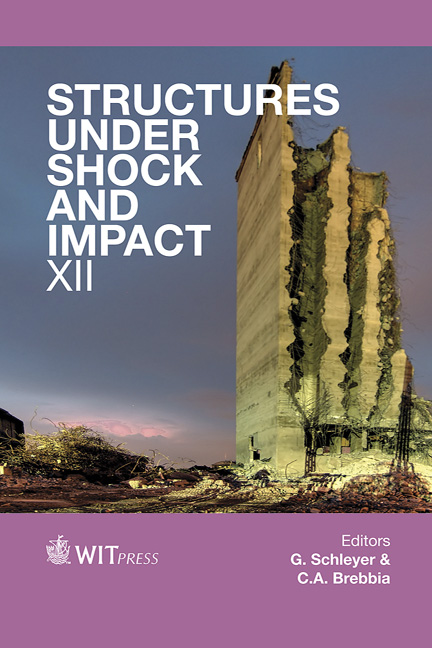Resistance Of Ultra High Performance Fibre Reinforced Concrete To Projectile Impact
Price
Free (open access)
Transaction
Volume
126
Pages
12
Page Range
261 - 272
Published
2012
Size
644 kb
Paper DOI
10.2495/SU120231
Copyright
WIT Press
Author(s)
P. Máca & R. Sovják
Abstract
The aim of this work is to describe the resistance of ultra high performance fibre reinforced concrete (UHPFRC) to projectile impact. The main goal is to find an optimum fibre content in the UHPFRC mixture with respect to the resistance to projectile impact, strength and workability. In addition, the authors describe the formulation process of UHPFRC that was developed without using heat treatment, pressure or a special mixer. Only ordinary materials available commercially in the Czech Republic were utilized throughout the process. The compressive strength of the resulting UHPFRC mixtures exceeded 150 MPa after 28 days and the flexural strength in three point bending was in the range of 40 MPa. Such high strengths were achieved due to the utilization of the high strength fibres and low water-to-binder ratio. The resistance of the UHPFRC to projectile impact is evaluated experimentally. Slabs made of UHPFRC with different fibre content were hit by deformable projectiles. The magnitude of the impact damage induced in the concrete specimens was evaluated from the average crater diameter and penetration depth. It was verified experimentally that an increase of fibre content has no significant effect on penetration depth while decreasing crater diameter. It was found that with respect to the resistance to projectile impact, strength and acceptable workability the optimal fibre content in the UHPFRC mixture is between 2 and 3% by volume. Keywords: cementitious composite, fibre reinforced concrete, optimization, local damage, mechanical properties, projectile impact.
Keywords
cementitious composite, fibre reinforced concrete, optimization, local damage, mechanical properties, projectile impact





